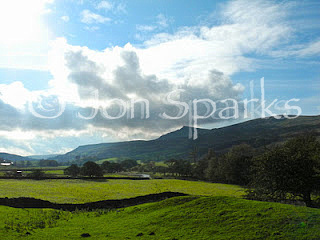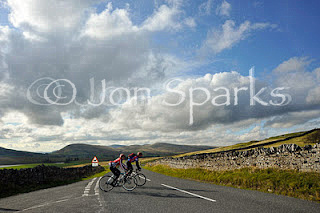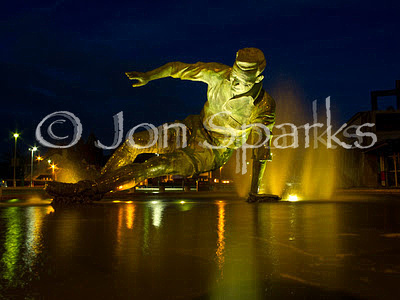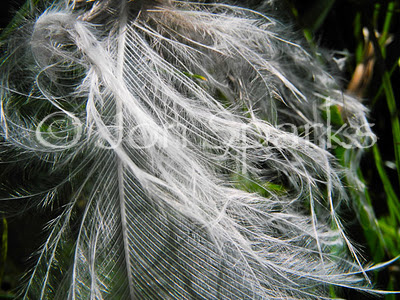Nikon P7100: the verdictI've done a lot of shooting with the Nikon P7100 recently as I've been writing a book on it. This has now been delivered to the publisher and the camera is about to go back too. So will I miss it?
Well, I’ll miss the light weight in my backpack next time I go mountain biking, but overall it’s a relief to get back to shooting with my SLRs. This is not to say that the P7100 is a bad camera. Far from it; it’s the best compact camera I’ve used, by some margin. But it’s still a compact and that means compromise.
For me the biggest compromise is image quality. This should be crucial for every committed photographer. And, at risk of repeating myself, this is not a criticism of the P7100 for having ‘only’ 10.1 megapixels. Far from it. I think it would be a better camera with 6 or 8 mp.
It seems to be an inevitable result of the smaller sensor (physically smaller, not number-of-pixels “smaller”) that compact cameras can’t handle wide tonal ranges as well as SLRs and other cameras with big sensors. I’ve looked at images from the P7100, and another of today’s top compacts, the Olympus XZ-1 (also 10.1mp) not only in comparison to shots from my current SLRs but also compared to shots from the 6-megapixel Nikon D70 which was my first digital camera. And I’d take the D70 shots nearly every time.
The most obvious failing on the compacts is lack of dynamic range. In plain English, highlights and deep shadows both lose detail much more readily. Above is a shot of Mallerstang in Cumbria taken on the P7100; on right, one from the same shoot taken on my D700. It’s not a scientific comparison but the overall lighting was pretty similar and I think the glaring white empty areas in the clouds in the compact shot are pretty obvious.
Action = frustration My other big frustration with the P7100, and compacts in general, is shooting action. Unlike earlier compacts, the basic response to the shutter button is pretty quick, but the focusing system isn’t nimble enough to cope with fast-moving subjects consistently. I took it with me to shoot the Rapha Super Cross cyclo-cross event at Brockhole on the shores of Windermere recently. I found that I could shoot panning shots fairly well with the P7100 as the focus distance changes only gradually, but it often failed to focus at all on riders coming towards me. In identical circumstances my Nikon D700 SLR coped flawlessly.
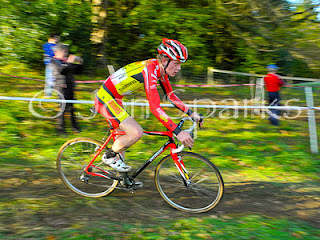  There is an option to pre-focus at a specific point, but unlike an SLR neither of the P7100’s viewing systems is good enough to see the rider snapping into focus. You’d have to pick a reference spot and shoot by eye when the rider hit the mark. Of course, action is demanding stuff to shoot and cycling action is tougher than most. Absolute speeds may be low compared to some other sports but you can be very close to the action.
There is an option to pre-focus at a specific point, but unlike an SLR neither of the P7100’s viewing systems is good enough to see the rider snapping into focus. You’d have to pick a reference spot and shoot by eye when the rider hit the mark. Of course, action is demanding stuff to shoot and cycling action is tougher than most. Absolute speeds may be low compared to some other sports but you can be very close to the action.Happy on a tripod I had more success shooting landscapes with the P7100, notably an afternoon/evening at Farleton Fell in Cumbria (it’s pure coincidence that all the locations referred to in this entry are in Cumbria). This is one of my favourite locations and never disappoints, but I actually really enjoyed shooting with the P7100 here. It is a good camera to use on a tripod and the folding screen actually makes sense when shooting from very low viewpoints, when it can be very awkward to peer through an SLR viewfinder. Results were pretty good, with the obvious proviso about lack of dynamic range compared to an SLR – this can be quite a big issue in landscape photography. The other big limitation is that the 28mm wide-angle is not wide enough.
Now, the P7100 does have an HDR (High Dynamic Range) mode which is designed to cope with exactly these situations. It works by making two different exposures, one to favour the highlights and one aimed at the shadows, and then blending them together. It’s a perfectly respectable technique; I’ve often manually merged multiple exposures to cope with extremes of contrast. However the results from the P7100’s automated HDR seemed uniformly flat and dull, and I’ve rapidly reverted to bracketing and manually merging the shots. It’s just a drag having to do this in situations where an SLR would capture the full range in a single exposure.
I mentioned the folding screen. Regular readers will know that I’m pretty sceptical about on-screen viewing and the P7100 has done little to dent my scepticism. Yes, it’s handy when shooting at low level, but the clarity of the screen image is nowhere near as good as an SLR viewfinder and it’s hard to see properly in bright light. Of course, the P7100 also has an optical viewfinder. I was initially delighted to see this but delight soon faded when I saw how small and poky the finder is. It got worse when I realised that it only shows about 80% of the actual picture – and as that 80% is a linear measurement, it only shows about 64% of the picture by area. Worse still, that 64% isn’t even consistently centred. Mind you, I did find it handy for those panning shots at the cyclo-cross, and the fact that the viewfinder doesn’t black out when you shoot was a help too.
Asking too much?
Reading this I think any fair-minded person would point out that I’ve been pushing the limits of the P7100 and most people probably wouldn’t expect that much out of it. This is perfectly true and I’ve done it quite consciously. I was seriously interested in whether the camera would meet enough of my needs to be a viable alternative to an SLR when I want to travel light. The problem is that the times when I want to travel light are usually when I’m doing something like mountain biking and want to capture the action, and the P7100 is not really an action camera. On the other hand, as compact cameras go it’s very good indeed. I do really like its rugged build and the generous array of external controls, making settings quick and easy to change. The external exposure compensation dial is possibly its best single feature.
If money were no object I probably would buy one of these. But money definitely is an object, and if I had spare cash right now for a lightweight ‘bike camera’ I know that the P7100 is too compromised for this purpose. For a similar amount I could get a Nikon D3100 and 18-55mm lens, and that looks like the best choice to me right now.
And the P7100 in a sentence? It's a great compact – but it's still a compact.
Comments
No comments posted.
Loading...
|
© Jon Sparks

